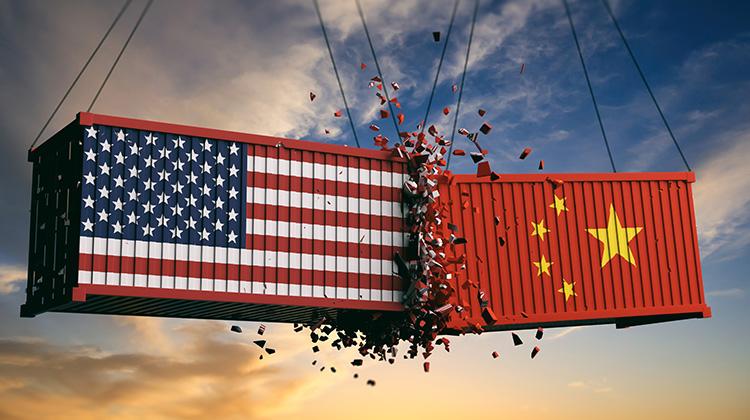The escalating trade tensions between the United States and China have created significant uncertainty for Minnesota’s agricultural sector, notably soybean producers. As China implements new tariffs on American soybeans in response to U.S. trade policies, Minnesota farmers—who rank third nationally in soybean production—face potential market disruptions and potential economic hardships. Minnesota’s soybean landscape, broad and rolling with the optimism of spring planting, now pulses with trepidation as Chinese tariffs looming overhead. In a state where approximately 25% of all soybeans cultivated are exported to China, international policy abruptly feels as significant as rainfall—unpredictable and profoundly impactful.Conversations in local elevators intertwine commodity prices with world politics; both seem equally volatile lately.
Recent developments have thrown producers into a world of anxiety. When China announced it would match President Trump’s latest tariffs—a hefty 34% on all U.S. imports—market tremors reached rural Minnesota overnight. These reciprocal actions mirror earlier episodes from 2018, but this time memories feel fresher and perhaps rawer: losses then were immense for U.S. agriculture and especially acute for soybean growers.It bears repeating that soybeans form Minnesota’s most valuable export crop; nearly half the entire U.S. harvest are shipped overseas altogether, global demand its pivotal profit center. “We’ve spent decades building trust with buyers in China,” Darin Johnson recently explained at a township cooperative meeting (as well as in his capacity as president of the Minnesota Soybean Growers Association). To many farmers here, such relationships aren’t transactional; they’re intergenerational assets threatened by geopolitical edict.
The association is bipartisan by statute—farmers historically care more about weather—and doesn’t mince words regarding impacts on “communities—both rural and urban” when trade headwinds rise[]3 . Their appeal to policymakers is steeped not just in pragmatism but cautionary tales: lose market share now, regain it only with considerable toil or never at all. Soy processors echo these sentiments though sometimes less publicly.A salient feature sharpening farmers’ concerns is the uncertainty itself—a loaded word echoed from coffee shops to agronomy workshops statewide. The cost structure for soybean cultivation isn’t forgiving even at the best times; stringing together seasons marred by lower demand or fluctuating prices tips balance sheets into red ink far quicker than some realise. Last year marked the first instance this century when many Minnesota soybean producers closed their books at a loss—a rare occurrence caused primarily by restrictive trade dynamics.
With new tariff threats pending (a possible escalation up to 50%, should current proposals become law), every forward contract becomes dire speculation rather than diligent business planning. Input costs climb whether beans sell abroad or don’t as fertilizer suppliers rarely wait politely while politicians debate terms far away from Beltrami County fields.
A few stakeholders note an odd strategic contradiction: even if other major exporters like Brazil or Argentina absorb displaced Chinese demand due to persistent tariffs, world supply remains ample enough that surplus inevitably pushes down overall bean prices globally—which still hurts American farmers through lost sales volume and diminished returns per bushel. This doesn’t reduce anyone’s nerves before dawn tractors roll out on chilly April mornings even though maybe paradoxically it should increases it.
If you stroll through Waseca—or any town where John Deere green fades each summer to dusty gold—you’ll catch snippets about “timeliness.” Time is currency here: Losing weeks waiting for negotiations can cost multitudes once-planted acres do not un-plant themselves nor do stray opportunity return years later multiplied by compound interest rates no one expected at planting time.
There remains another dimension rarely acknowledged outside industry circles: After repeated tariff disruptions buyers may construct new supply chains which remain durable even after disputes resolve themselves—a peculiarity sometimes overlooked when official statements project eventual recoveries based solely on past history absent future adaptation among overseas competitors or importers’ adaptive logistics departments who work swiftly behind scenes.
Even while discussing dire forecasts some seasoned growers recall days before globalization transformed their industry so thoroughly; there was occasional nostalgia but few illusions about returning there without severe economic consequences regionally and nationally alike—it isn’t just farming that would contract under long-term closure of foreign markets linked so closely over generations.
Phrases like “we get it”—meaning understanding necessity for tough negotiations—dot farm group communiques now almost as often as weather updates preceding each morning’s chores. To paraphrase those working sunup-to-sundown farmers among southern Minnesota’s black dirt contours: expedience matters right now more than principles described amongst distant marble halls because fall settlement sheets will show no mercy regardless of how well intentioned any nation’s policies are supposed be toward its own people—or others’.
To conclude or else risks forgetting what this export epicenter learned repeatedly during recent skirmishes over beans versus diplomacy—the seasonal clock always runs faster than bureaucracy does except when it doesn’t if that makes sense (even though next spring proves everything again one way or another).

